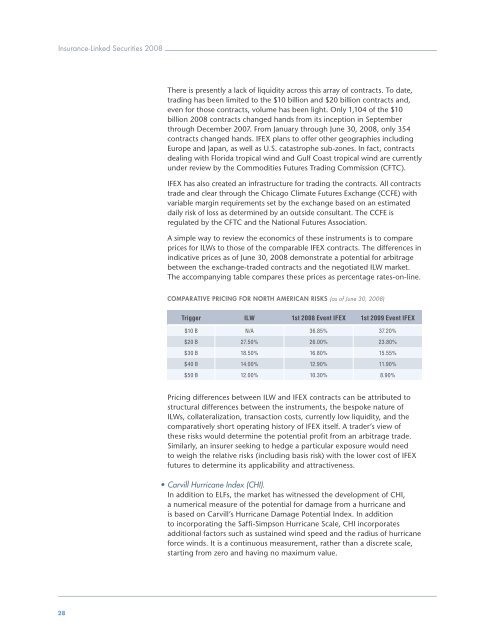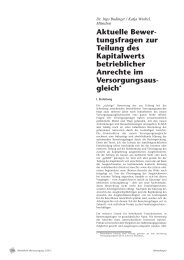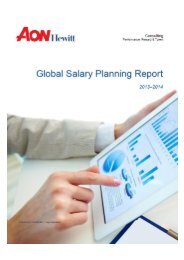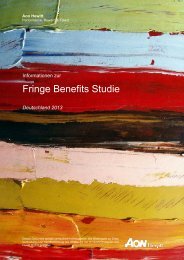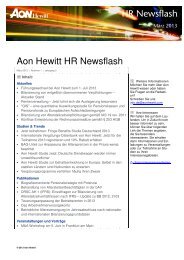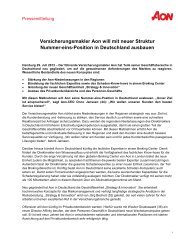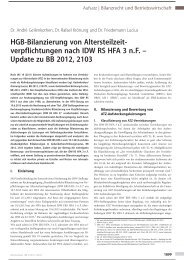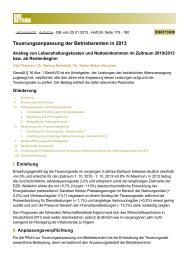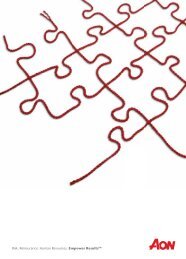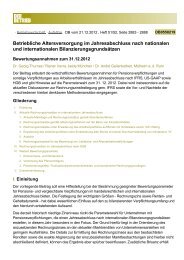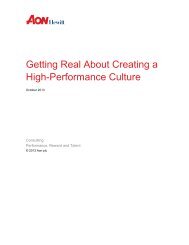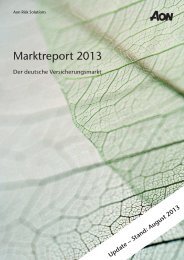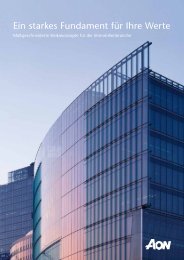Insurance-Linked Securities Report 2008 - Aon
Insurance-Linked Securities Report 2008 - Aon
Insurance-Linked Securities Report 2008 - Aon
You also want an ePaper? Increase the reach of your titles
YUMPU automatically turns print PDFs into web optimized ePapers that Google loves.
<strong>Insurance</strong>-<strong>Linked</strong> <strong>Securities</strong> <strong>2008</strong><br />
28<br />
There is presently a lack of liquidity across this array of contracts. To date,<br />
trading has been limited to the $10 billion and $20 billion contracts and,<br />
even for those contracts, volume has been light. Only 1,104 of the $10<br />
billion <strong>2008</strong> contracts changed hands from its inception in September<br />
through December 2007. From January through June 30, <strong>2008</strong>, only 354<br />
contracts changed hands. IFEX plans to offer other geographies including<br />
Europe and Japan, as well as U.S. catastrophe sub-zones. In fact, contracts<br />
dealing with Florida tropical wind and Gulf Coast tropical wind are currently<br />
under review by the Commodities Futures Trading Commission (CFTC).<br />
IFEX has also created an infrastructure for trading the contracts. All contracts<br />
trade and clear through the Chicago Climate Futures Exchange (CCFE) with<br />
variable margin requirements set by the exchange based on an estimated<br />
daily risk of loss as determined by an outside consultant. The CCFE is<br />
regulated by the CFTC and the National Futures Association.<br />
A simple way to review the economics of these instruments is to compare<br />
prices for ILWs to those of the comparable IFEX contracts. The differences in<br />
indicative prices as of June 30, <strong>2008</strong> demonstrate a potential for arbitrage<br />
between the exchange-traded contracts and the negotiated ILW market.<br />
The accompanying table compares these prices as percentage rates-on-line.<br />
COMPARATIVE PRICING FOR NORTH AMERICAN RISKS (as of June 30, <strong>2008</strong>)<br />
Trigger ILW 1st <strong>2008</strong> Event IFEX 1st 2009 Event IFEX<br />
$10 B N/A 36.85% 37.20%<br />
$20 B 27.50% 26.00% 23.80%<br />
$30 B 18.50% 16.80% 15.55%<br />
$40 B 14.00% 12.90% 11.90%<br />
$50 B 12.00% 10.30% 8.90%<br />
Pricing differences between ILW and IFEX contracts can be attributed to<br />
structural differences between the instruments, the bespoke nature of<br />
ILWs, collateralization, transaction costs, currently low liquidity, and the<br />
comparatively short operating history of IFEX itself. A trader’s view of<br />
these risks would determine the potential profit from an arbitrage trade.<br />
Similarly, an insurer seeking to hedge a particular exposure would need<br />
to weigh the relative risks (including basis risk) with the lower cost of IFEX<br />
futures to determine its applicability and attractiveness.<br />
• Carvill Hurricane Index (CHI).<br />
In addition to ELFs, the market has witnessed the development of CHI,<br />
a numerical measure of the potential for damage from a hurricane and<br />
is based on Carvill’s Hurricane Damage Potential Index. In addition<br />
to incorporating the Saffi-Simpson Hurricane Scale, CHI incorporates<br />
additional factors such as sustained wind speed and the radius of hurricane<br />
force winds. It is a continuous measurement, rather than a discrete scale,<br />
starting from zero and having no maximum value.


